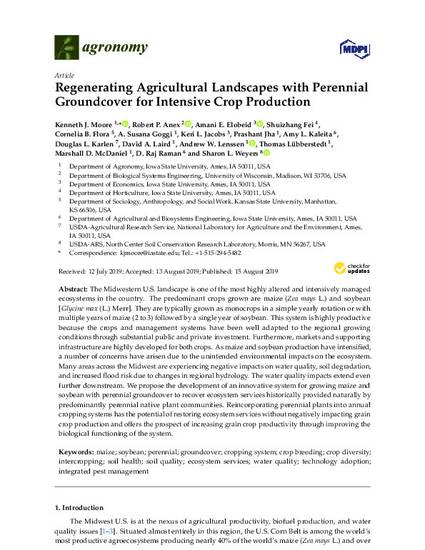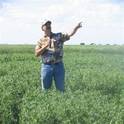
The Midwestern U.S. landscape is one of the most highly altered and intensively managed ecosystems in the country. The predominant crops grown are maize (Zea mays L.) and soybean [Glycine max (L.) Merr]. They are typically grown as monocrops in a simple yearly rotation or with multiple years of maize (2 to 3) followed by a single year of soybean. This system is highly productive because the crops and management systems have been well adapted to the regional growing conditions through substantial public and private investment. Furthermore, markets and supporting infrastructure are highly developed for both crops. As maize and soybean production have intensified, a number of concerns have arisen due to the unintended environmental impacts on the ecosystem. Many areas across the Midwest are experiencing negative impacts on water quality, soil degradation, and increased flood risk due to changes in regional hydrology. The water quality impacts extend even further downstream. We propose the development of an innovative system for growing maize and soybean with perennial groundcover to recover ecosystem services historically provided naturally by predominantly perennial native plant communities. Reincorporating perennial plants into annual cropping systems has the potential of restoring ecosystem services without negatively impacting grain crop production and offers the prospect of increasing grain crop productivity through improving the biological functioning of the system.
Available at: http://works.bepress.com/andrew_lenssen/148/

This article is published as Moore, Kenneth J., Robert P. Anex, Amani E. Elobeid, Shuizhang Fei, Cornelia B. Flora, A. Susana Goggi, Keri L. Jacobs et al. "Regenerating Agricultural Landscapes with Perennial Groundcover for Intensive Crop Production." Agronomy 9, no. 8 (2019): 458. doi: 10.3390/agronomy9080458.